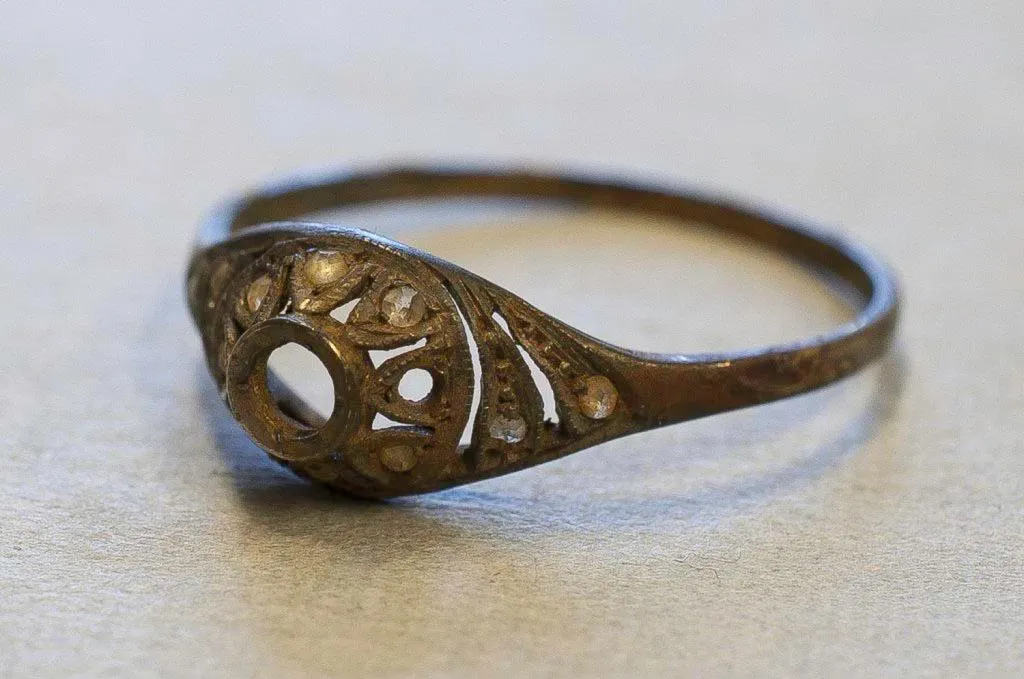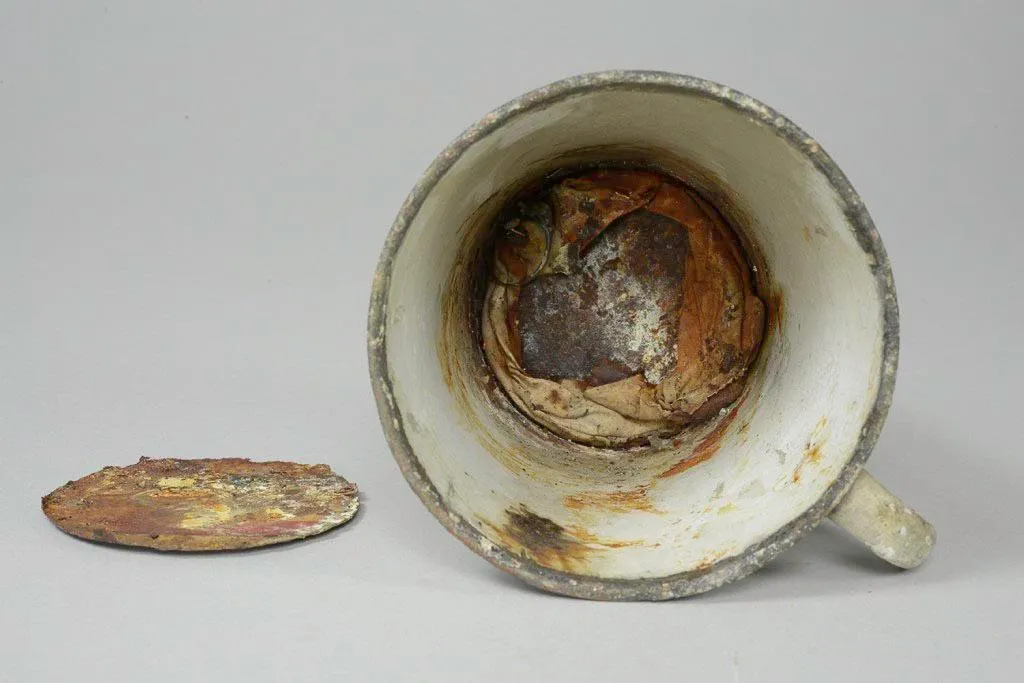Auschwitz Museum Finds Victim’s Jewelry in False-Bottomed Mug
A women’s ring made of gold and a necklace was carefully wrapped in a piece of canvas
When Nazis deported Jewish families to the concentration camps, they usually told their victims they were being "resettled" and that they could bring a few small suitcases of possessions. It was a calculated ruse—they knew the families would pack as many valuables as possible into their luggage to help fund their new lives. When they arrived at concentration camps, guards then rifled through their belongings to loot hidden jewelry, money and other valuable possessions. At the Auschwitz-Birkenau Memorial and Museum, visitors can still see piles of pillaged suitcases with the names of the original owners written on the sides.
Recently, staff at the museum found that at least one family treasure made it though the camp undiscovered, according to a new press release. Under a false bottom in an enameled cup, staff members found a carefully hidden ring and a necklace. The cup was part of the institution's collection of 12,000 pieces of kitchenware, including jugs, cups and bowls that the Nazis looted from camp inmates.
While curators were working with the kitchenware in the museum’s main hall, the false bottom separated due to more than 70 years of degradation. “Under it…was a women’s ring made of gold and a necklace wrapped in a piece of canvas,” says museum staffer Hanna Kubik in the release.
Kubik says the ring, which has several stones mounted on it, and the chain, were tested and are consistent with gold used to make jewelry in Poland between 1921 and 1931. However, there are no markings or any way to trace the jewelry back to the individual or family that owned it.
The jewelry tells a story of tragedy but also hope. As museum director Piotr M. A. Cywiński says in the statement, “The hiding of valuable items—repeatedly mentioned in the accounts of survivors, and which was the reason for ripping and careful search of clothes and suitcases in the warehouse for looted items…proves on the one hand to the awareness of the victims as to the robbery nature of the deportation, but on the other hand it shows that the Jewish families constantly had a ray of hope that these items will be required for their existence.”
Much of the gold stolen from concentration camp victims, including gold teeth, was melted down and made into ingots, which were deposited into the so-called “Melmer Account” at the Reichsbank. Much of that gold was then funneled through Switzerland, which in 1998 began a $1.25 billion payout as part of a settlement with concentration camp victims and their descendants.
The museum reports that it will store the jewelry in its collection in the way in which the victim hid it, to serve as further testimony of the fate that awaited Jews who were deported to the concentration and extermination camp.


